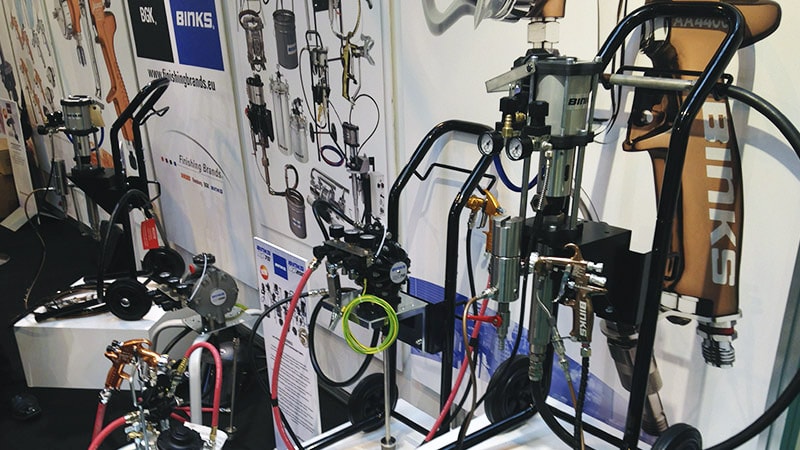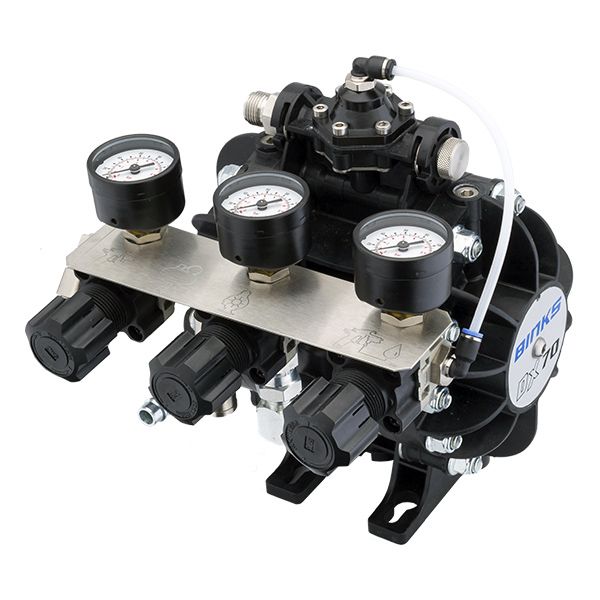Paint pumps are widely used in industrial finishing. In a lot of applications, without the help of the pumps to paint, it would be almost impossible to carry out some projects, given the time it would take and the cost it would have.
Paint pumps: Types and use in industrial finishing
There is a lot of pumps, each one of these have been proved specially suitable for a range of applications.
In this article we are going to focus more in what can be achieved using both piston and diaphragm pumps for industrial finishing applications.
Of course, pumps can be used for many different applications, not just for painting.
The advantage of using Binks paint pumps is that they are specifically developed for industrial finishing applications. That is why it can be said that they are made to last.
Just as the coatings vary according to the wide range of industrial finishing needs that companies may have, it also changes the appropriate pump to use.
But you can be sure your company need a paint pump when one or some of the following conditions are true:
- Coating flow rates vary from one gallon per minute to several hundred gallons per minute
- Pressure is 100 PSI or less, in most cases
- Viscosity varies from medium to higher
- Application duty cycles range from some occasional transfer to 24 hours per day recirculation
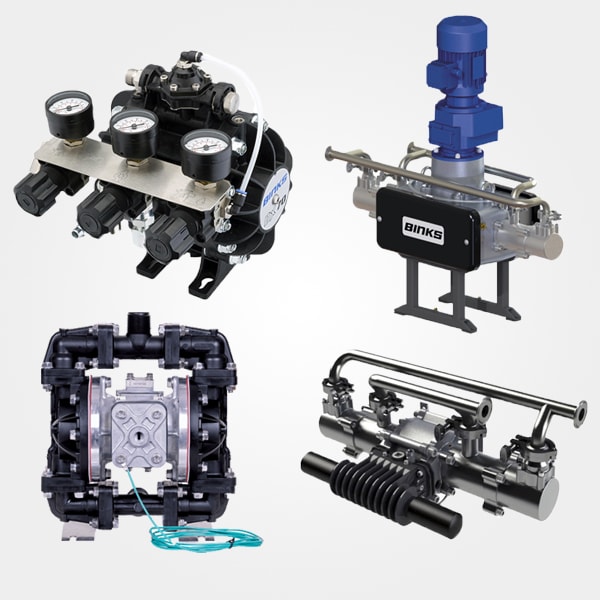
In short, paint pumps can be divided by what generates its power, by mechanism, by the pressure they can develop and by suitable application
Paint pumps by driven power:
- Pneumatic pumps
- Electrical pumps
- Hydraulic pumps
Paint pumps by mechanism:
- Piston pumps
- Diaphragm pumps
- Positive displacement pumps
Paint pumps by pressure:
- High ( 3000 psi up to 8500 psi)
- Medium (500 psi up to 3000 psi)
- Low (0 to 500 psi)
Paint pumps by application:
- Atomization
- Paint Circulation
- Fluid Transfer
Let’s take a further look at some of them.
Piston pumps: How they work and what applications are they suitable for?
Piston pumps are used especially to move very viscous or high pressure fluids.
Piston pumps are pneumatic pumps that can be of low, medium and high pressure, as required by the application to be used.
They are also known as positive displacement pumps. They are the right pumps to move liquids remotely and strongly.
Piston pumps are volumetric. Its volumetric efficiency can reach 98%.
They generate their movement through a piston that moves with an air motor to allow the entry and exit of fluids.
The higher the viscosity of the material being pumped, the greater the piston diameter of the air motor must be.
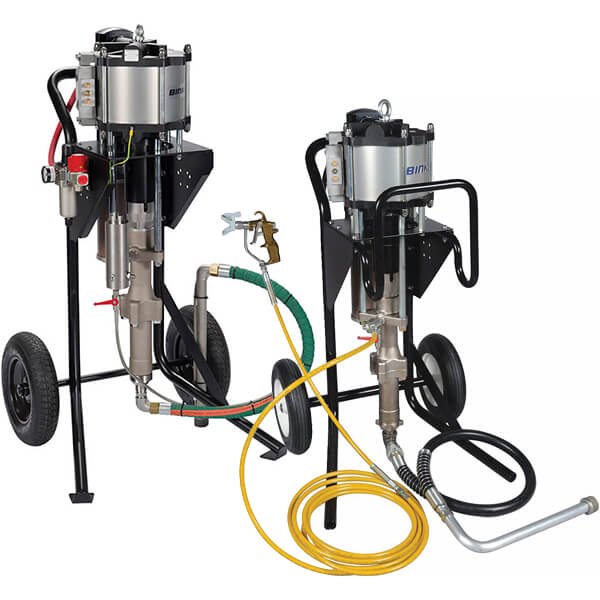
Because piston pumps have the ability to generate more pressure than diaphragm pumps, they are especially used for the following applications:
- Aerospace industry
- Marine and naval industry
- Automotive industry
- Wood industry
- Steel structures and manufactures
- Manufacture of trailers and chassis
- Tanks for pipes and storage
Piston pumps can also be subdivided into:
- Radial piston pumps
- Axial piston pumps
- Angled barrel piston pumps (Vickers)
- Angular push plate piston pumps (Denison)
How exactly piston pumps works?
Piston pumps are basically composed of an air motor, a piston and a group of valves.
Although they vary in their particular way of working, they all share the same principle of operation: With each movement the pump moves the stick or piston, creating a vacuum and pushing the fluids according to the volumetric capacity that it has.
The flow rate of a piston pump will be precisely defined by the volumetric capacity of the pump.
Piston pumps are ideal for industrial finishing applications. However, each piston pump can be designed for a specific application.
The Binks MX Series pump, with AA1600M and AA4400M guns, for example, has been designed for air-assisted Airless equipment.
1 or 2 paint guns can be connected to this pump. It is ideal for low or medium viscosities.
The recommendation is to use piston pumps mainly for movement of epoxies, high solids paints and immediate drying paints.
Piston pumps are frequently used for these materials:
- Immediate drying paints
- High solids paints
- Epoxies and urethanes with high solids content
- Tar epoxy resins
- Coatings for Wood (wood sealers and catalyzed lacquers)
- Solvent and water-based coatings
- Primers, sealers and paints rich in zinc
- Enamels of plural components and polyurethanes
How Horizontal Piston Pumps works?
Horizontal piston pumps work in the same way as ordinary piston pumps, but because the piston is horizontal, they have 4 advantages:
1.- They work better for difficult coatings
2.- Its operation, independently of the coating, is more reliable
3.- The maintenance is simpler
4.- Energy consumption is efficient
Binks has a horizontal piston pump model called Maple. It comes in 6 versions to fit the particular needs of the application for which it is required.
Diaphragm pumps: how they work and what applications are them suitable for?
Diaphragm pumps owe their name to the way they operate. Inside they have 1 or 2 diaphragms that have elastic walls that are pushed by a central axis. With each stroke the increase in pressure pushes the contents outwards.
The pressure exerted can be adjusted by means of check valves, which are often elastomer balls.
Diaphragm pumps can also be known as positive displacement pumps. Another name that they usually receive is membrane pumps.
The membranes are manufactured with a resistant and flexible material. It has a limited shelf life, so depending on the material being pumped its useful life can be longer or shorter.
Diaphragm pumps are usually low priced and maintenance is also economical.
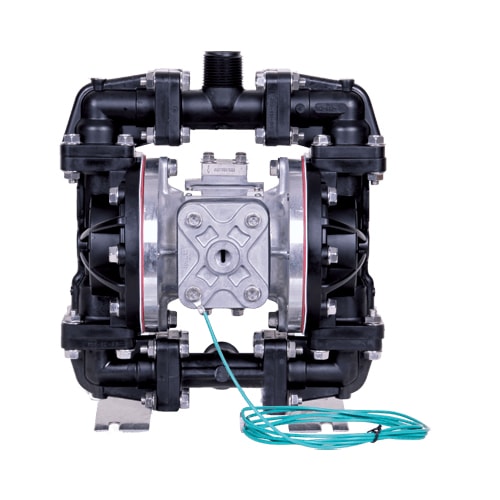
Experts agree that diaphragm pumps are especially suitable for automotive paint and single-component industrial paints, such as varnishes, foundations and primers.
It is especially important that the diaphragm pumps are used in small installations, smaller than 20 meters, with heights less than 8 meters and as flat as possible. When there are elevations in the facilities, the pumps usually reduce their efficiency.
So, what differentiates diaphragm pumps is that they are ideal for transferring materials at low pressure and short distances.
All diaphragm pumps share the following characteristics:
- They can have a very versatile use
- They do not have seals or gaskets, so they will not leak
- Its maintenance is simple and economical
- Can move critical or dangerous fluids
- It is not necessary to prime them to work
- They are resistant to corrosion
- There are submersible and other non-submersible models
- They can work oil free and dry
- Both the lifting height and the flow are adjustable
- Speed and pressure can be adjusted
Diaphragm pumps can be subdivided into:
- Mechanical diaphragm pumps
- Electric diaphragm pumps
- Hydraulic diaphragm pumps
- Pneumatic diaphragm pumps
Double diaphragm pumps, like the Binks Gemini II series, DX70 and DX200, are specially designed for industrial finishing applications. Such applications may be transferring, circulating and spraying materials like:
- Paints
- Coatings
- Catalyzed varnish
- Resins
- Solvents
Additional equipment and accessories when using paint pumps
When using pumps for industrial finishing applications there is a number of other equipment needed. In many cases you will need hoses, both fluid and air filters, regulators, tanks and, of course, spray guns.
Some brands, like Binks, have all the equipment you could need for your operation in one single package: an outfit.
For example, the MX3560 / MX3070 / MX35AA is an Airless spray outfit that includes a Binks MX piston pump, plus the extra equipment required for some specifical application.
So, the first step is to define what the pump is required to. With that information one of our experts can help to to determine which one is the pump or outfit suitable for what you need.
Conditions to choose the right pump for your job
There are 3 basic conditions when choosing which one is the right pump for the job. These 3 are:
- Coating type
- Application type
- Flow required
Let’s dig a bit around this.
Coating type
Paints can range from epoxies and urethanes with high solids content to water-based solvents. In this huge range, viscosity is normally the main variation.
The right coating for the application is usually determined by the object or surface to be painted.
Application type
Clearly, is different the equipment necessary for a small operation in a wood shop than the required for a naval manufacturing company.
The frecuency your are going to perform industrial finishing tasks is also an important factor to decide what paint pump to choose. Clearly, to more frecuency, more capacity should be needed.
Flow required
This is pretty much defined for the coating chose. But also is needed to define how far is the paint deposit from the application point. And how much pressure is needed for the paint when being applied.
In a few words
Define all your industrial finishing related equipment could be a long-term investment for your company, so, the decision should be taken carefully having thought all the details and possibilities.
You are most welcome to ask whatever you need to know to decide your purchase. Our experts not only can help you to define the equipment you would need, but also design how they can be assembled.
We regularly publish useful information for the industrial finishing industry. Subscribe here to our monthly newsletter to stay informed.
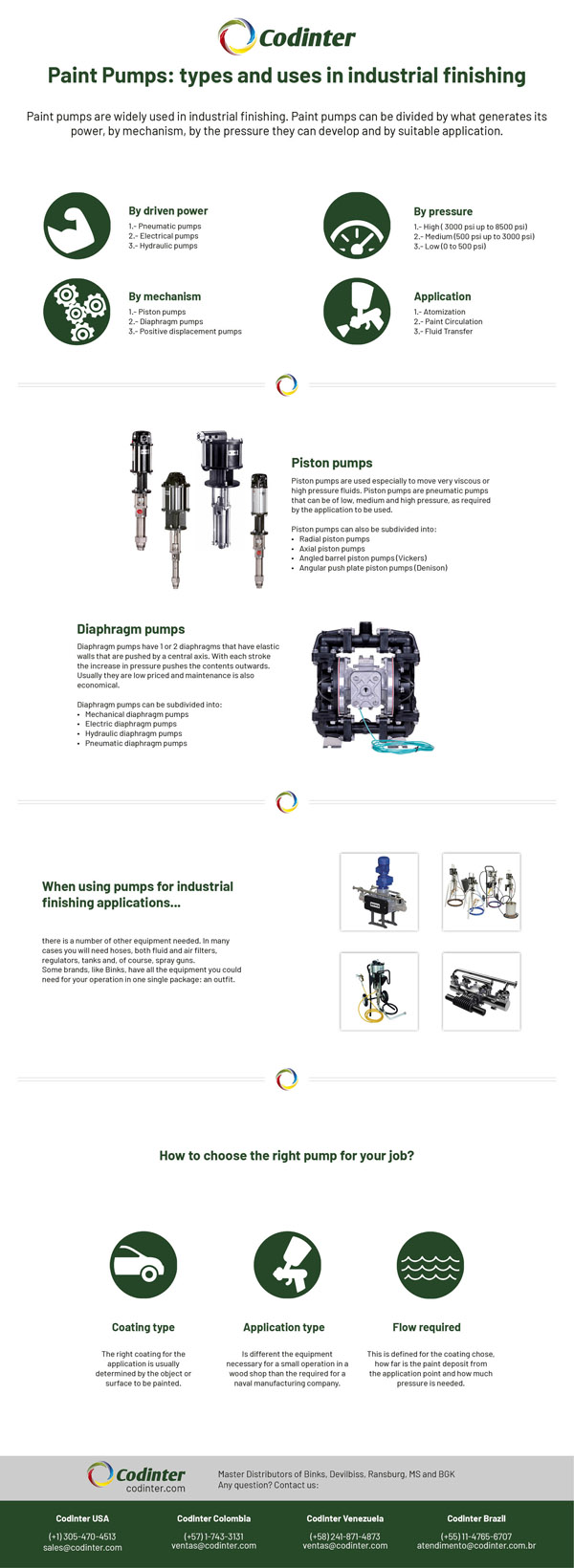
As a summary, we have done this infographic where you can easily see what is explained in this article.
Did you like this article? We invite you to comment. Do you have questions? Contact us or make them in the comments section and very soon we will be answering.

